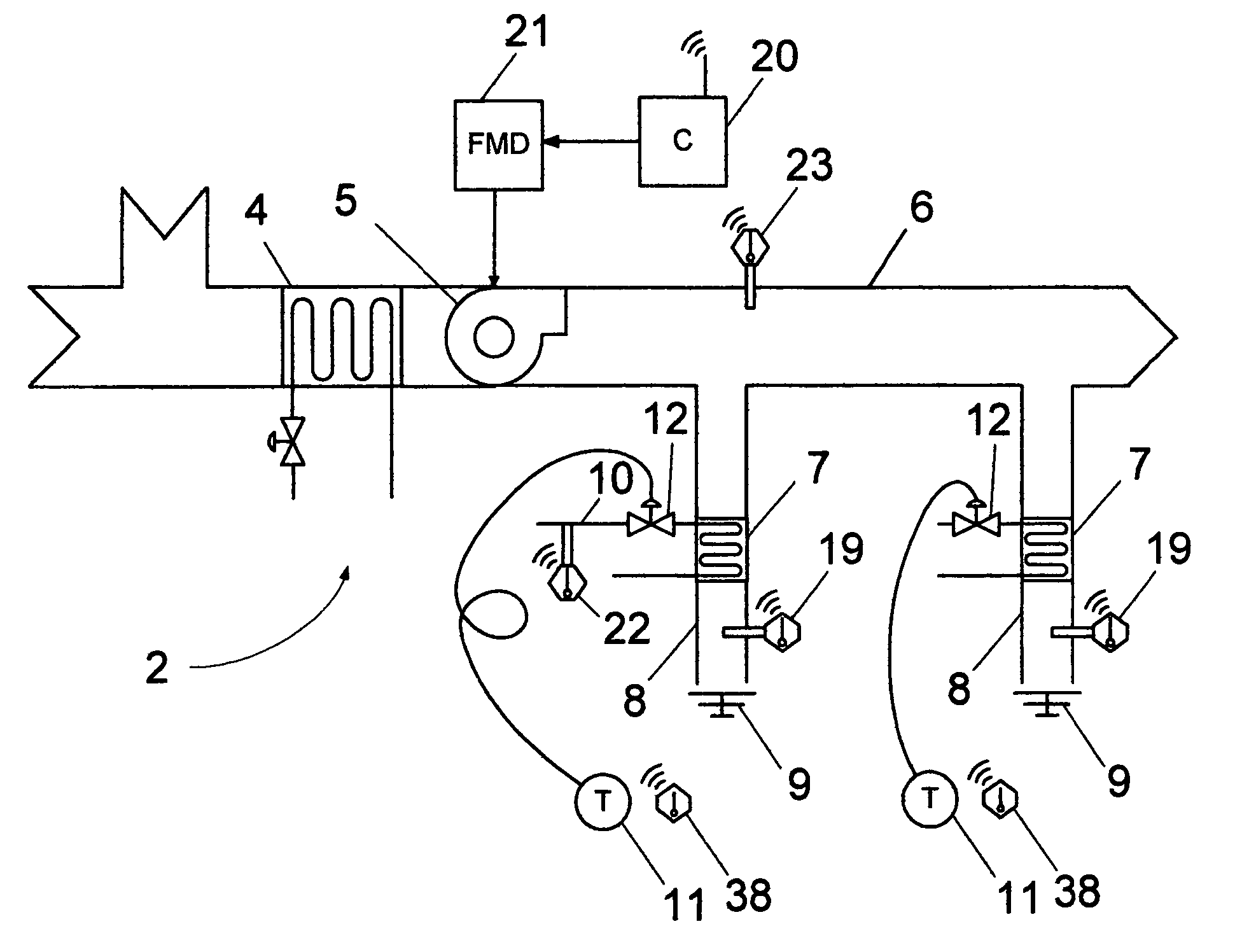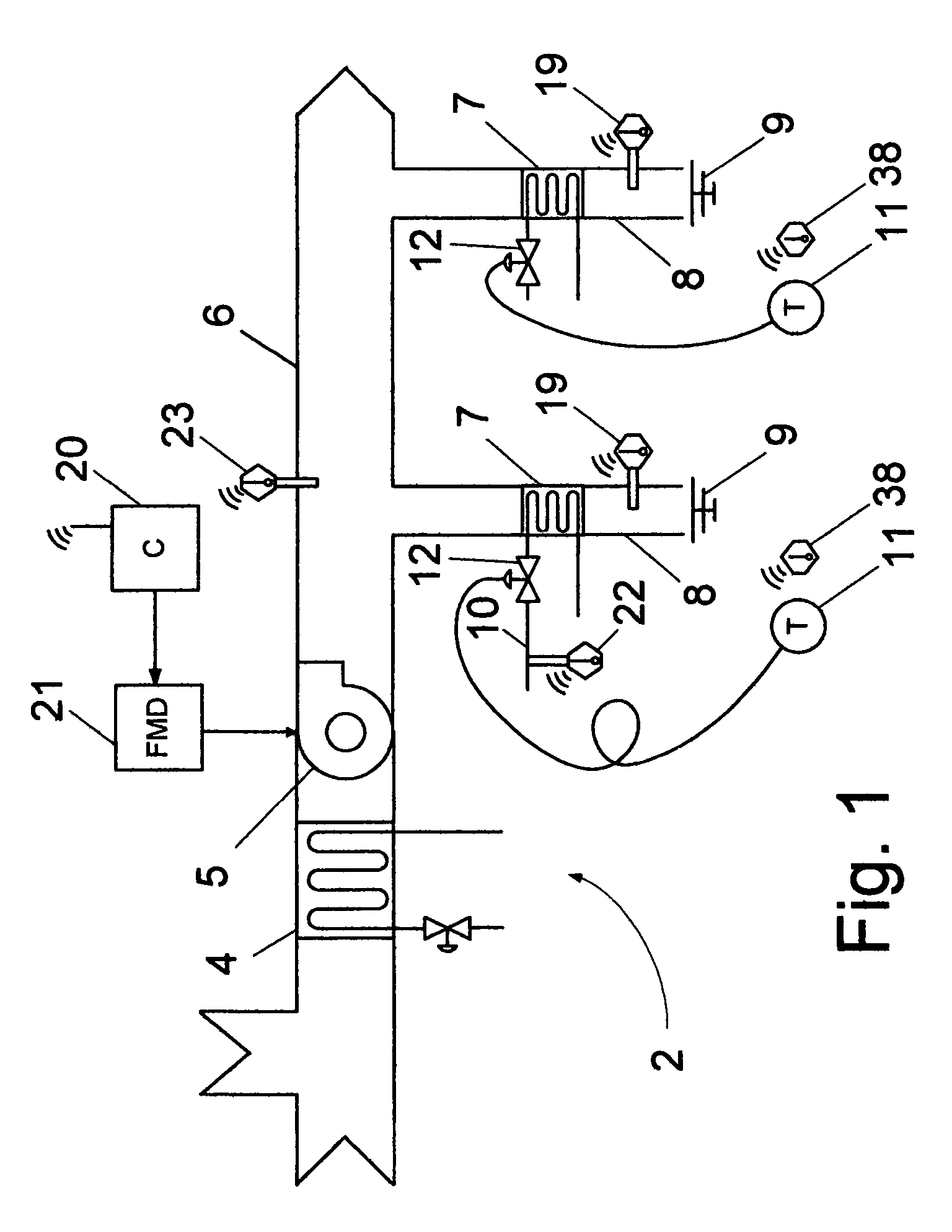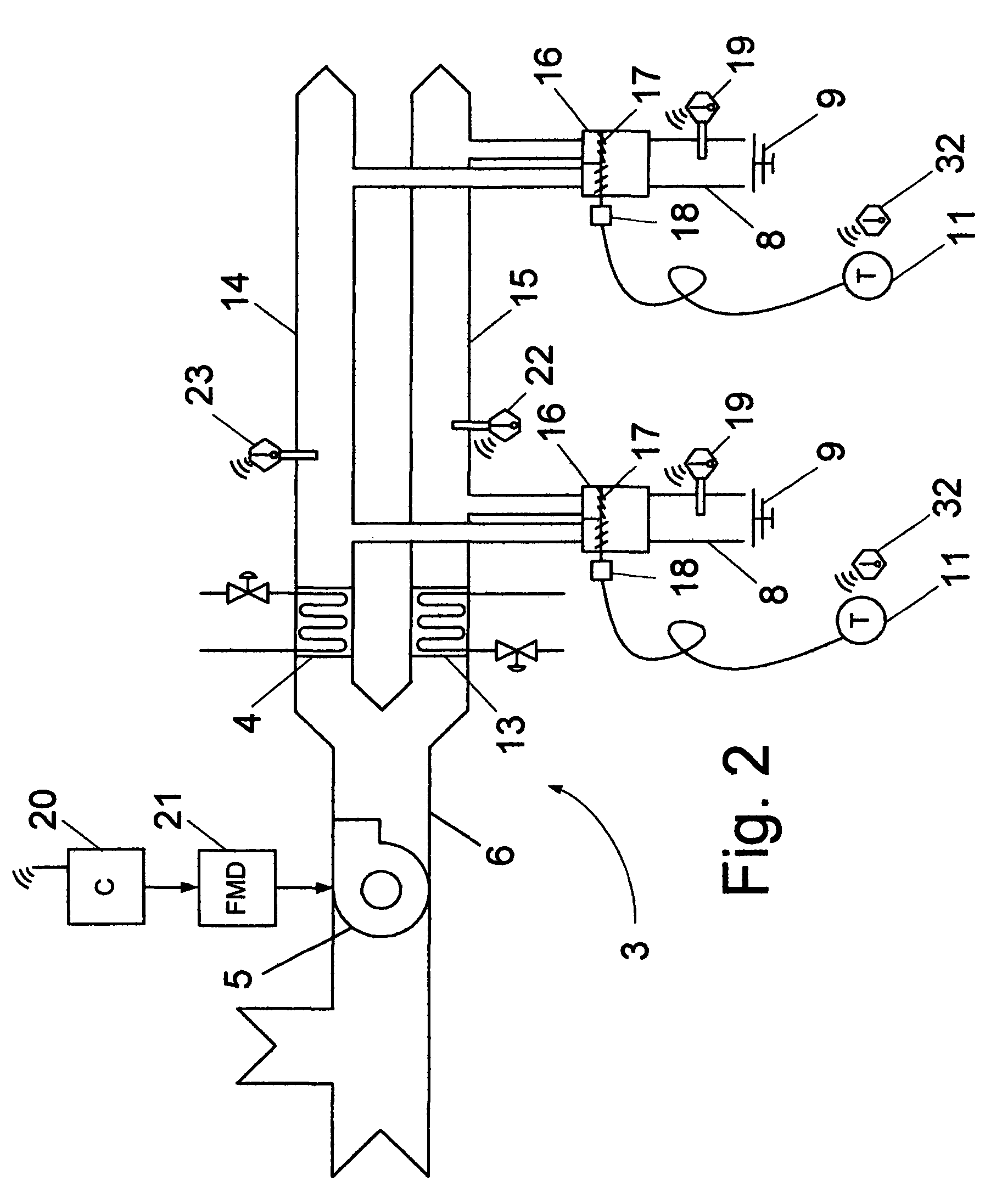Method and apparatus for converting constant-volume supply fans to variable flow operation
a technology of constant-speed supply fans and variable-flow operation, which is applied in the direction of ventilation systems, heating types, instruments, etc., can solve the problems of inefficient constant-speed hvac systems, inconvenient conversion, and high conversion costs, so as to reduce the speed of the supply fan, improve energy efficiency, and reduce the effect of fan speed
- Summary
- Abstract
- Description
- Claims
- Application Information
AI Technical Summary
Benefits of technology
Problems solved by technology
Method used
Image
Examples
Embodiment Construction
[0033]A preferred embodiment of the supply fan control system is illustrated in FIG. 1-5. HVAC system 1 may be a single-duct re-heat system 2, a dual-duct constant-volume system 3 or a multi-zone system. FIG. 1 shows single-duct system 2. Single-duct systems 2 include a cooling coil 4, a supply fan 5, supply air ducts 6, re-heat coils 7, discharge air ducts 8, and discharge air diffusers 9. Cooling coil 4 is a heat exchanger that carries a cooling fluid such as chilled water or a chilled water and glycol solution. Cooling coil 4 is mounted in supply air duct 6. Supply fan 5 could be a centrifugal fan or an axial fan. Supply fan 5 is mounted in supply duct 6. A duct is an elongate sheet metal structure with round or rectangular cross-section designed to transport air. Supply duct 6 contains branches that lead to re-heat coils 7. Re-heat coil 7 is a heat exchanger that carries heating fluid supplied by a hot water supply pipe 10. It is mounted between a branch of supply duct 6 and dis...
PUM
 Login to View More
Login to View More Abstract
Description
Claims
Application Information
 Login to View More
Login to View More - R&D
- Intellectual Property
- Life Sciences
- Materials
- Tech Scout
- Unparalleled Data Quality
- Higher Quality Content
- 60% Fewer Hallucinations
Browse by: Latest US Patents, China's latest patents, Technical Efficacy Thesaurus, Application Domain, Technology Topic, Popular Technical Reports.
© 2025 PatSnap. All rights reserved.Legal|Privacy policy|Modern Slavery Act Transparency Statement|Sitemap|About US| Contact US: help@patsnap.com



